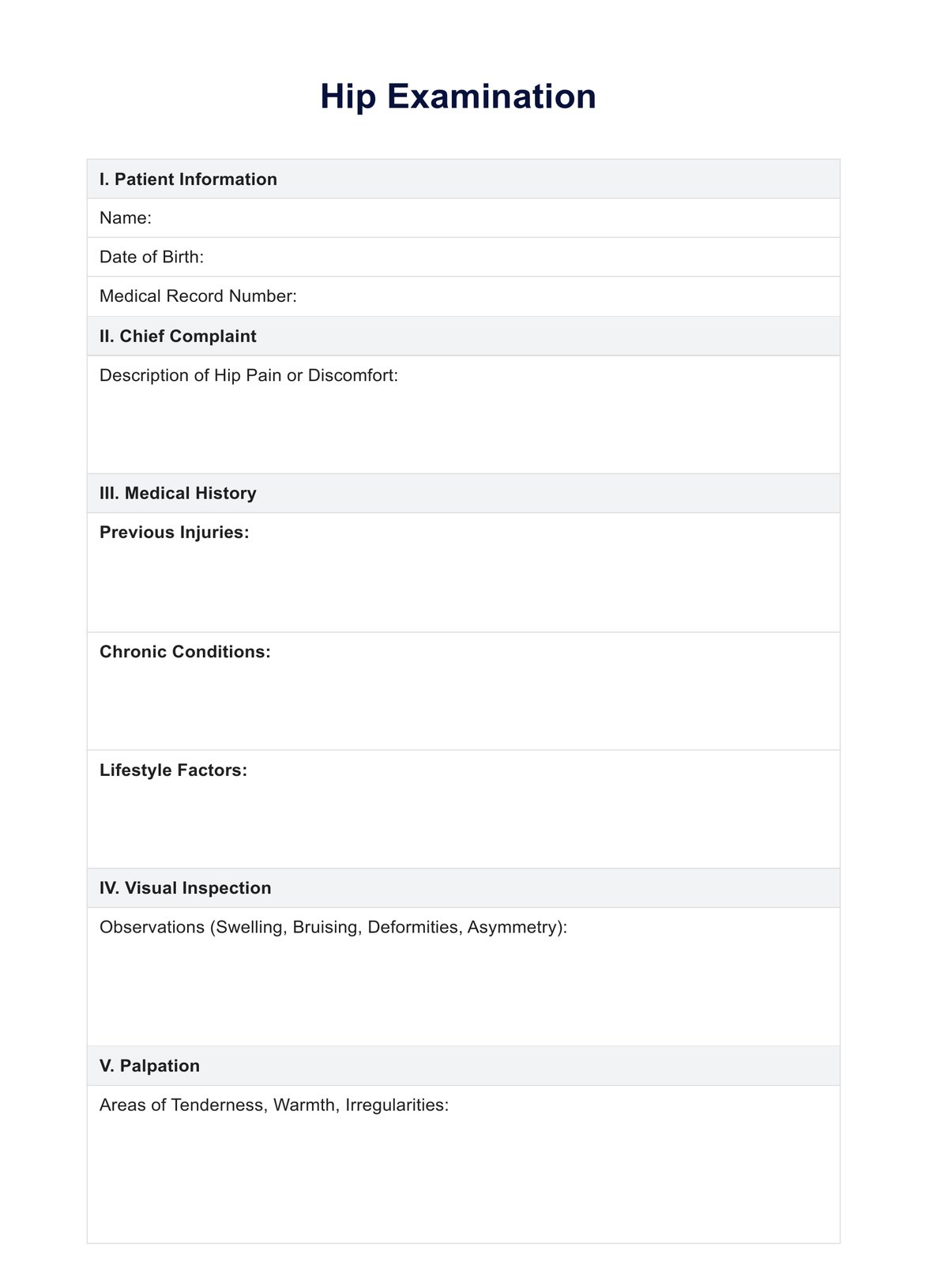Expect a series of steps, including patient history, physical examination, range of motion tests, and possibly special tests like the FADIR test.

Hip Examination
Explore the comprehensive Hip Examination Template for accurate assessments, diagnosis, and treatment of various serious hip disorders, and injuries.
Use Template
Hip Examination Template
Commonly asked questions
Through a combination of physical exams and diagnostic imaging like X-rays or MRIs to visualize the internal structures of the affected hip part.
Treatment can include physical therapy, medications, lifestyle modifications, and possibly surgical interventions depending on the diagnosis.
EHR and practice management software
Get started for free
*No credit card required
Free
$0/usd
Unlimited clients
Telehealth
1GB of storage
Client portal text
Automated billing and online payments











